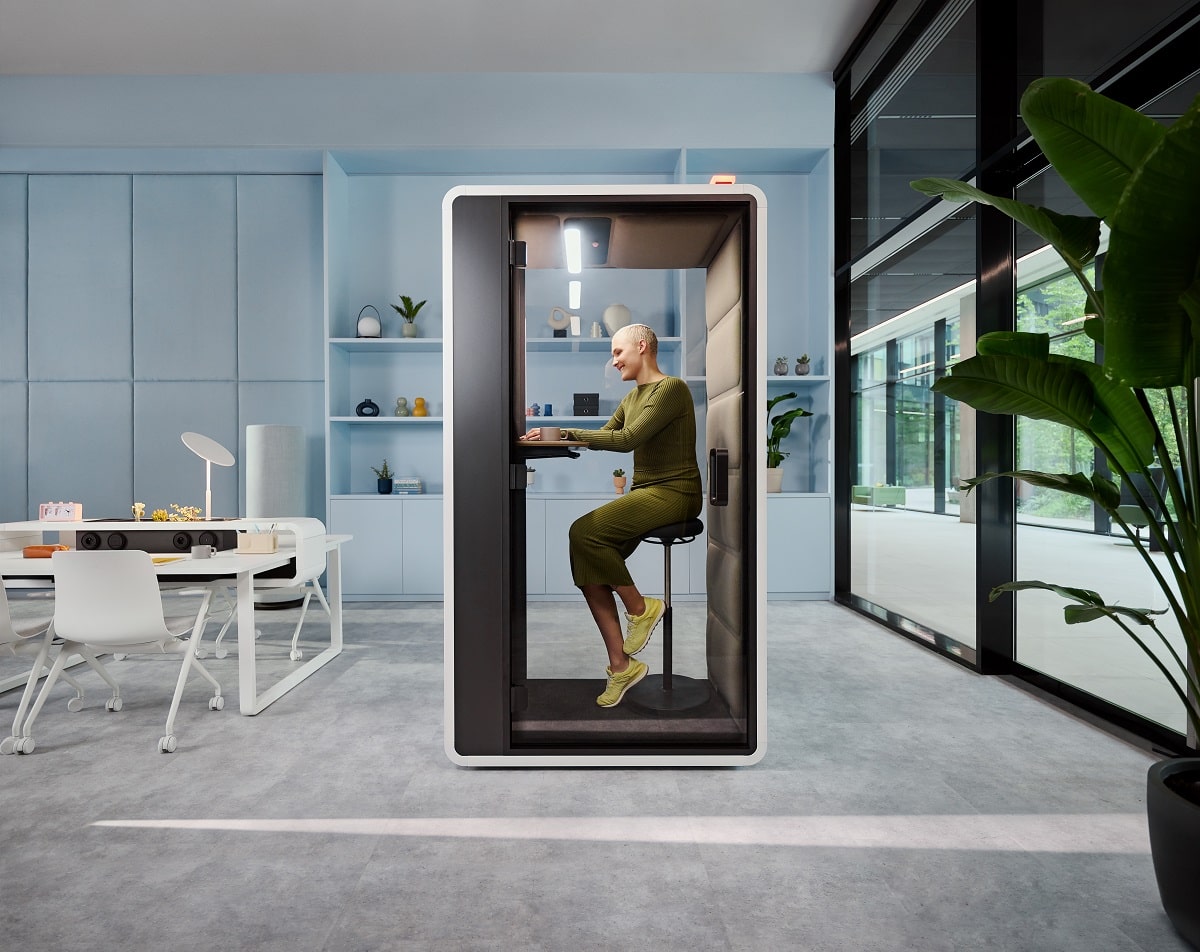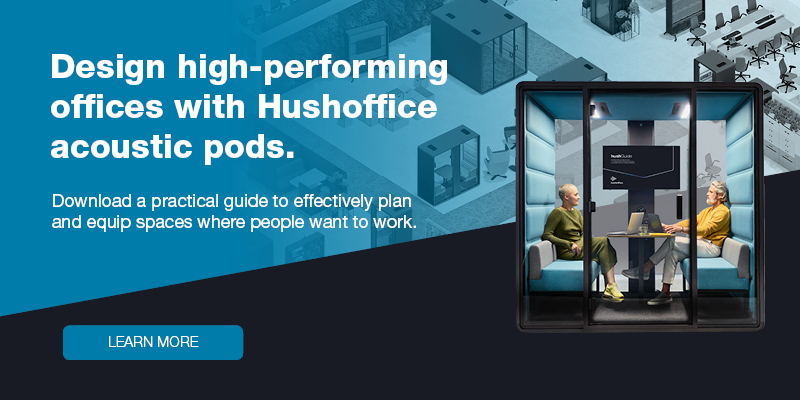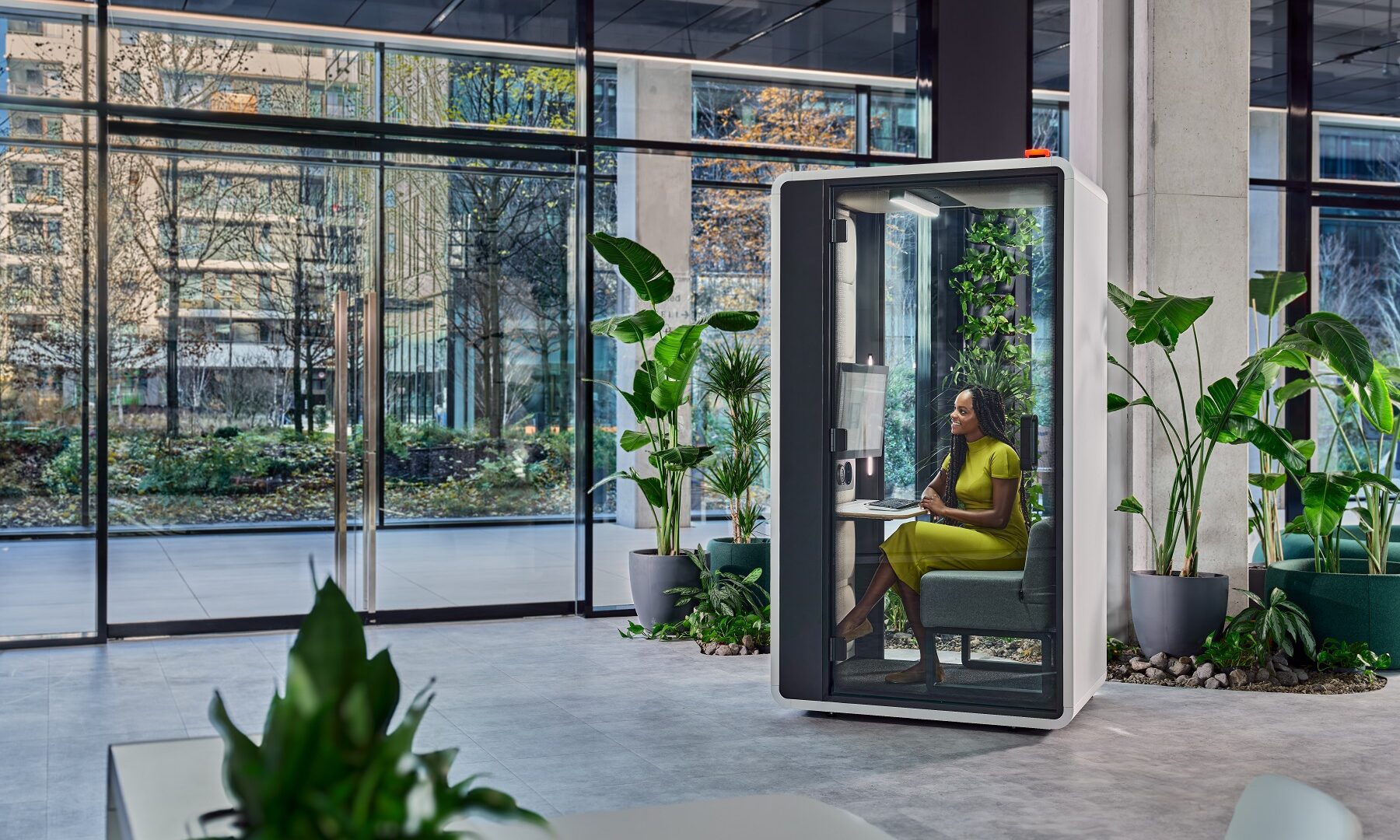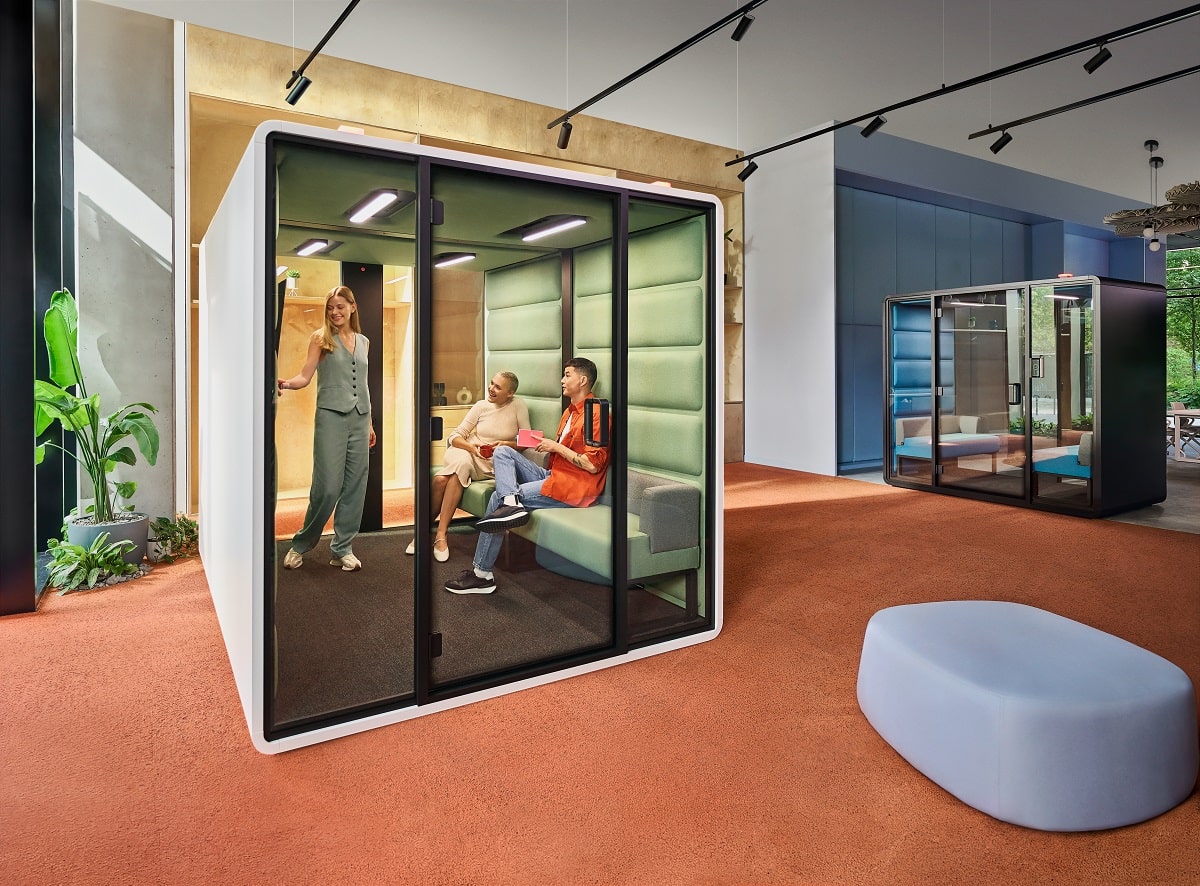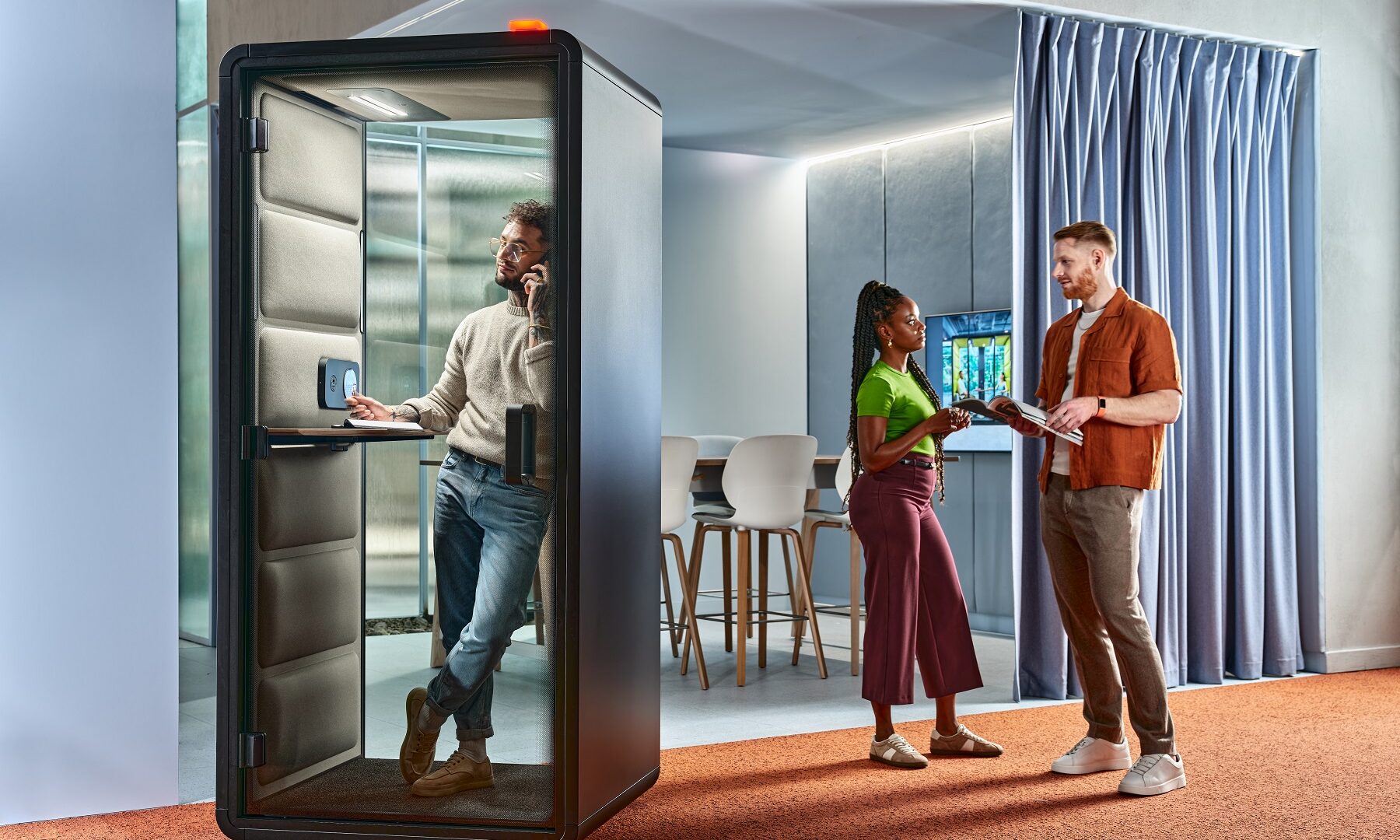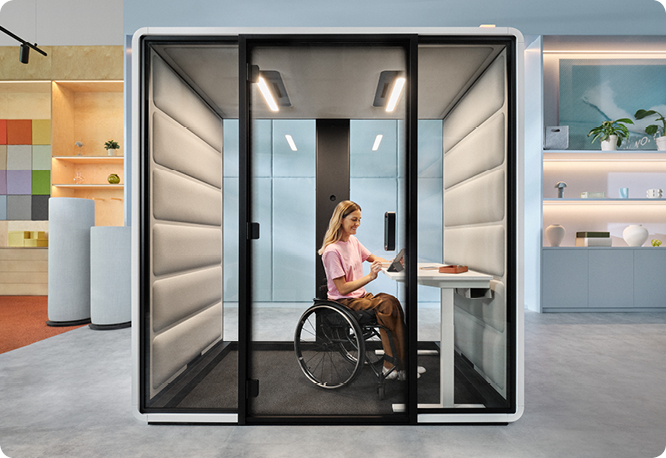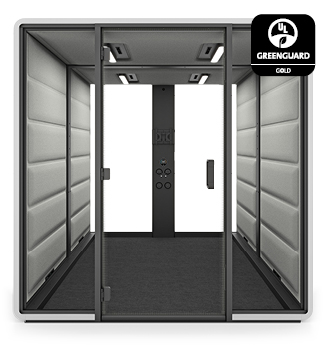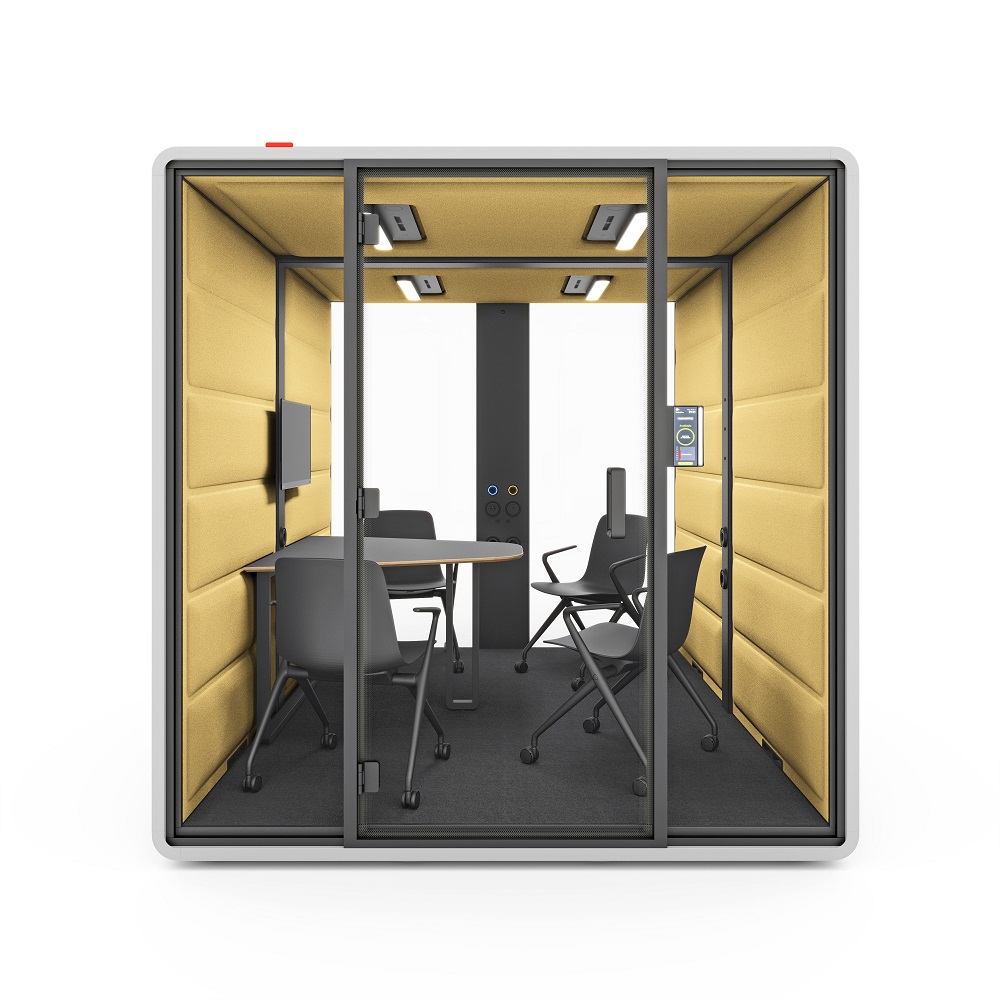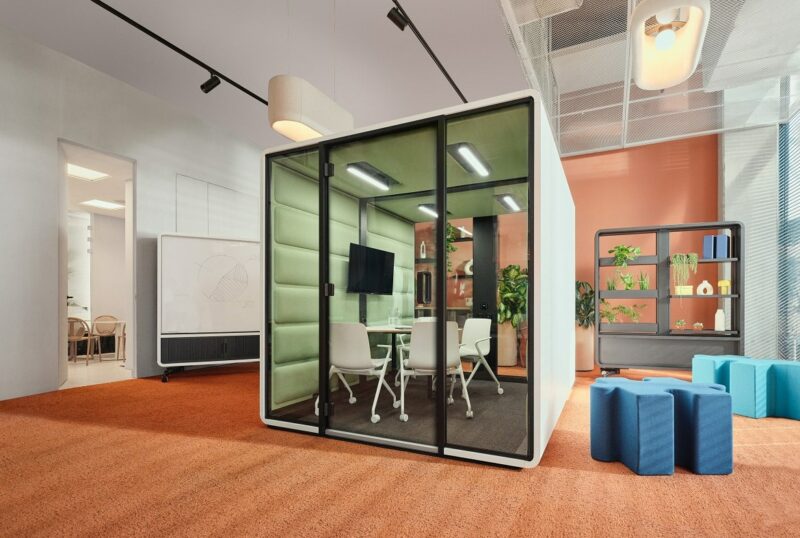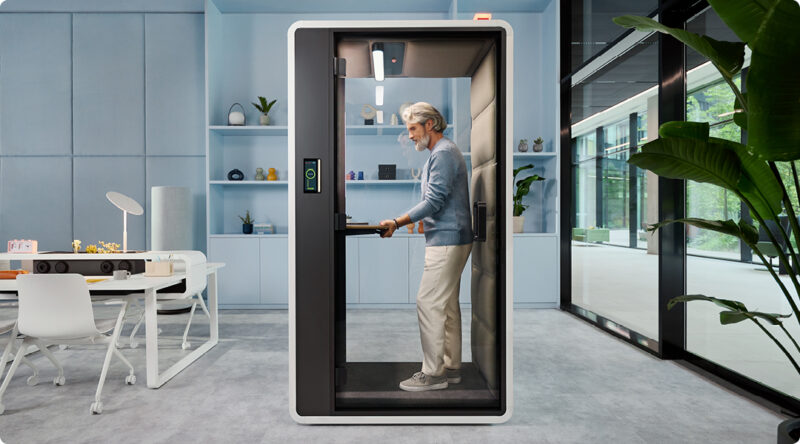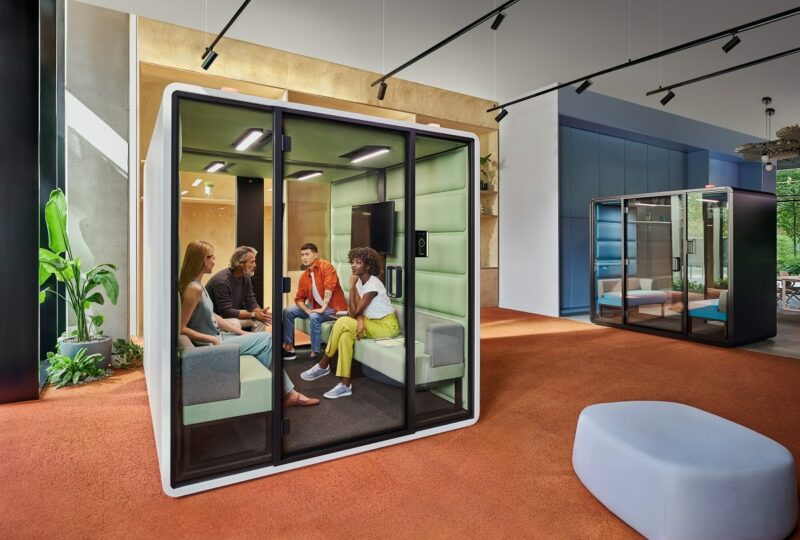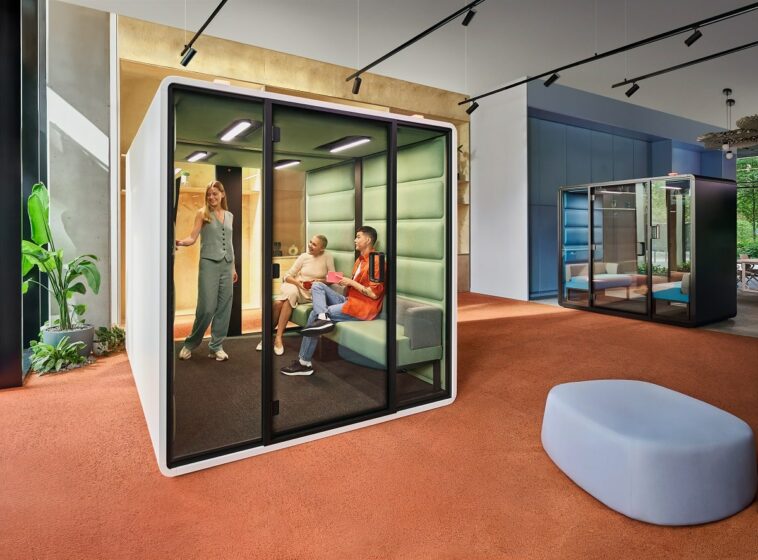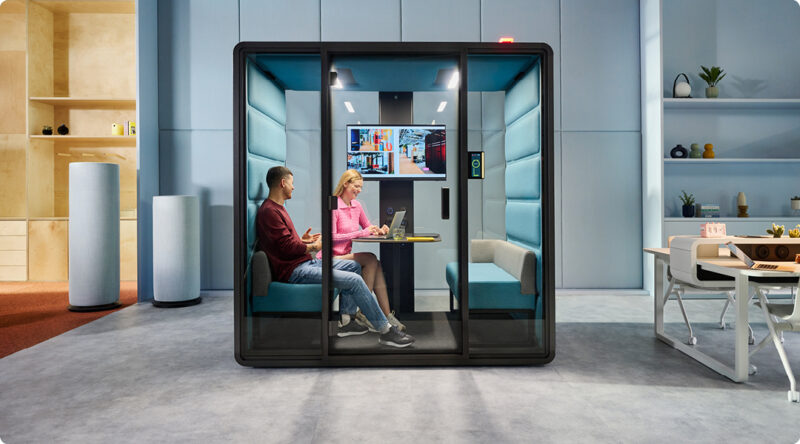New data, new demands: rethinking the modern work environment
- Posted on: 10 July 2025
- By: Hushoffice Team
Can silence and sound, structure and softness, collaboration and calm coexist in today’s workplace? According to the research, they have to in order to satisfy employees.
Rethinking the modern work environment – tl;dr
- Employee engagement is critically low, and it’s costing us. According to Gallup, only around 21-23% of employees worldwide feel engaged at work. And persistent disengagement is not just a morale issue. It has a real economic impact, costing the global economy up to $9 trillion annually. The message is clear: today’s office environments must do more than offer desks — they must support emotional connection, purpose, and well-being.
- Hybrid work is here to stay. And autonomy is key to its success. Gensler’s 2024 Global Workplace Survey found that 94% of employees in top-performing workplaces have the freedom to choose where and how they work. This freedom drives not only higher engagement but also better outcomes. So as hybrid models normalize, offices must evolve from being the default location to being a compelling choice — designed to enhance human connection and the human functions of work.
- What is a future-ready office? Sensory-aware, mobile-friendly, and designed for flow. Today’s high-performing workspaces are supportive of movement, choice, and a diversity of work modes. Features like zoned layouts, acoustic privacy, adjustable lighting, and seamless tech integration are integral.
Is your office keeping up with the times?
Today’s office is not a place but an idea. A swirling constellation of tasks, people, and places, held together not by walls but by purpose. And like any living idea, it must always evolve. If your office resembles a 2010 floorplan more than a fluid environment, it may be quietly slipping out of relevance.
Gen Z and young millennials are bringing a new rhythm to work
Constant connection. Deep values. Fluid work-life boundaries. Younger workers seek workplaces that align with tenants of personal growth and collective responsibility, not just quarterly targets. They are leading the charge toward choice and flexibility in where and how they work.
The newest generations don’t ask for work-life balance — they architect it.
They’ve grown up with the tools to blur boundaries between work and life on their own terms. So the workplace must now earn its place in their approach.
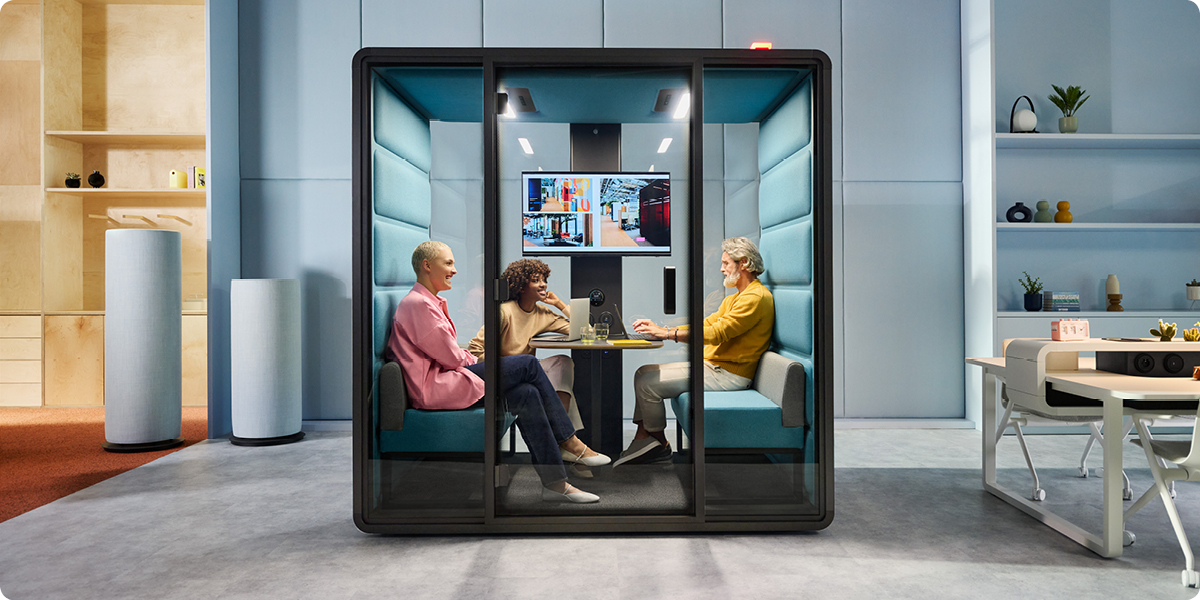
“The latest generation of workers expect environments that support autonomy, not environments that dictate routines. This is why spaces like Hushoffice booths resonate with them. Booths offer control in a world of constant noise. They grant privacy in a culture of openness. And they are calm amidst stimulation. For Gen Z and millennials in particular, they are a place of focus that respects the need to self-regulate. But their genius certainly isn’t generational — pods and booths work for anyone who needs to tune out distraction in order to tune in,” says Marcin Ścigała, Senior Marketing Specialist, Hushoffice.
Read more: What does each generation want from the office?
New employment models means new spatial needs.
In 2024, U.S. employee engagement hit a 10-year low, with only 31% of workers feeling engaged. This decline represents about 3.2 million fewer engaged employees and is especially sharp among younger workers under 35. Inarguably, reimagining the workplace is more crucial than ever.
Hybrid work and the “workation” model…
Employees are blending work and travel in “workations,” conducting meetings in forest cabins or seaside cafés. The key isn’t just location independence, but mental autonomy. As such, offices must now compete with anywhere.
Freelancing and gig economy…
The gig economy is becoming a central artery of how things get done. Freelancers, consultants, and micro-entrepreneurs crave workspaces that are nimble while respectful of independence.
With hybrid work, flexibility defines the market.
Over 83% of organizations that have updated their office spaces since 2020 report higher satisfaction with hybrid work. This indicates that thoughtful spatial redesign is a ticket to successful hybrid working.
Hybrid technologies for a hybrid work world.
Asynchronous communication, cloud platforms, and collaboration software are now the scaffolding of daily work. Offices equipped with smart technologies are best prepared, with organizations investing in mobility-enabling tech and work environments seeing better alignment with hybrid success.
Planning office space in the era of hybrid work.
The best workplaces give employees more choice in how they work. They also offer a mix of settings tailored to different types of tasks, from focused work in a one-person pod like hushFree.S to collaboration in the spacious hushFree.L cabin. Sensory comfort and technology play a big role too.
Permanent desks or hot desking?
The office today is a choreography of movement — employees dipping in and out, needing space for bursts of focus or bursts of dialogue. Hot desking can work if paired with clear systems.
How do open spaces and coworking zones affect work?
When every conversation becomes public and every noise a distraction, productivity frays in open space. To make these social zones productive, acoustic solutions like Hushoffice booths are needed, helping soften the edges by offering islands of privacy.
Spaces for collaboration and team integration matter.
As teams grow more distributed, in-person moments matter more. Offices must make these moments memorable. They must design areas for creativity, celebration, and bonding. Informal lounges, whiteboard corners, and modular, wheelchair-accessible work pods can all nurture togetherness.
How can technology in the office drive change?
Nearly 70% of employees feel having access to the right technology significantly boosts their ability to collaborate and be productive. As offices adopt smarter tech, they open up new possibilities for flexibility and connection.
Communication and collaboration is half digital.
A digitally fluent office weaves the right tools into the layout itself. Smart screens in pods, soundproof zones for calls, integrated scheduling systems for booking rooms or booths. In a tech-laden world, every square meter should be as smart as the cloud but simple, too.
AI is the new colleague — quiet, quick, and increasingly capable.
From scheduling meetings to analyzing workflow trends, AI systems are reshaping how we plan and perform. The future office will not only host human conversations but also whisper insights from its algorithms.
Silence in an open office, a technological wonder?
Not with booths like Hushoffice, carefully engineered as perfect untouchable environments of acoustic calm. Booths like Hushoffice reintroduce silence with dignity, bringing focus back into the equation for good.
The future office is a space that supports diverse needs.
The best offices will flex to fit changing energy levels, different brains, and shifting team dynamics. When a space offers choices — a quiet team booth to reset, a private lounge to connect, a desk that’s just right — it becomes personal.
The office is no longer the default but the destination.
And because people no longer have to be there, the office must give them something they can’t get anywhere else. That means designing with radical human-ness.
“What makes an office space human? Zoned layouts that honor different work styles. Solo, social, strategic, ad hoc, and so on. Sensory comfort is the foundation here. Features like adjustable lighting that lets you tune the mood to match the task. Or tweakable airflow that breathes with the space and makes it feel just right. Or ready access to acoustic solitude through 4-person team collab booths like hushFree.M. These are the details that build trust in a space, and that ultimately allow you to realize the full potential of your people,” says Marcin Ścigała, Senior Marketing Specialist, Hushoffice.
When done right, the office becomes the heart of hybrid work.
It becomes a place where fragmented digital effort comes together, where culture is not broadcast but embodied. And, best of all, where the most human parts of work like empathy and invention are fully alive, enlivening the employees partaking in it.
Systems like hushAssistant are like true assistants in comfort and ease.
HushAssistant is an intuitive system built into hushFree acoustic booths that allows you to easily adjust lighting and ventilation with a single touch. Instead of navigating complex interfaces, you can quickly set your preferred brightness and airflow to create a personalized, comfortable workspace. It’s a simple, tactile solution that puts environmental control directly in your hands.
“In a world where technology can overwhelm more than it supports, HushAssistant provides simple support. Its streamlined interface gives you touch-control over your environment as well as access to a selection of basic features such as a countdown timer and coffee break reminder. No asking you to learn anything new or dig through digital menus. It just works, reducing decision fatigue and letting you settle into your task or your thoughts with ease. Its magic lies in the fact that the sensory environment is always with you, always the present moment. So by making that environment adaptable without being demanding, hushAssistant almost pulls you out of mental clutter and back into the now,” says Marcin Ścigała, Senior Marketing Specialist, Hushoffice.
Read more about hushAssistant’s features: Introducing hushAssistant for hushFree pods.
Sensory calm and control are tremendous supports for mental wellness.
Because we are sensory creatures, equalizing the sensory environment — making lighting gentler and acoustic calmer, for instance — is one of the greatest supports of emotional well-being.
The right sound conditions are imperative.
Noise pollution is a hidden toxin of open offices. It dulls cognition, spikes cortisol, and derails focus.
- Noise pollution is a widespread but often overlooked public health crisis that goes far beyond damaging our hearing. It triggers the body’s stress response by activating the brain’s emotional center, the amygdala, which raises heart rate and releases stress hormones like cortisol. This constant activation can lead to serious health problems such as heart attacks, diabetes, dementia, and increased inflammation, making quiet, controlled spaces like acoustic booths for the office more and more essential for protecting health and well-being.
Sensory-aware office design is the way to an inclusive office space.
And because sound has one of the most profound effects on our cognition and mental state, getting a handle on office noise is often the first step for any team seeking to create a more balanced and universally accessible workplace.
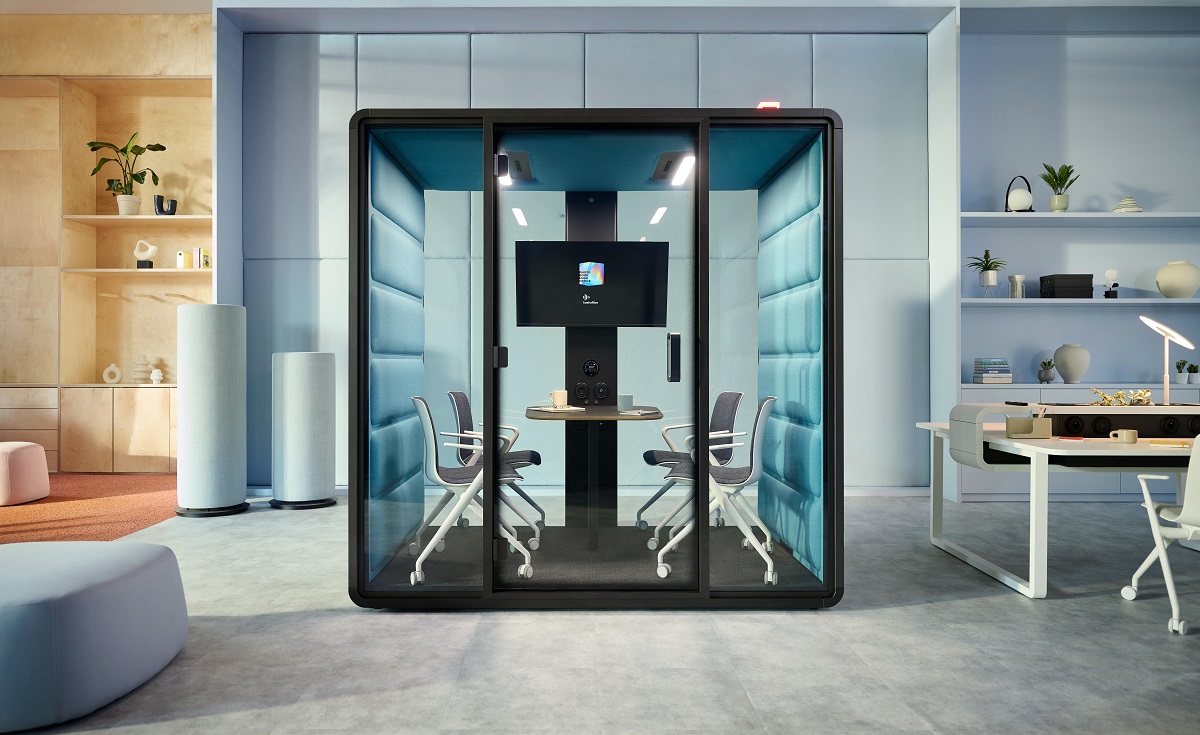
“We’re sensory creatures first and thinking beings second. Before a thought even forms, our nervous system is already responding to the world around us. It is registering brightness, filtering sound, and adjusting to temperature. So sensory-aware office design isn’t a nice extra but foundational. When a space is calmer, quieter, and visually gentler, it speaks directly to the body, bypassing mental clutter and offering immediate relief. That’s why it so universally powerful — it supports every employee, of every age and neurotype, by making the environment itself an ally. This is why we at Hushoffice believe refinine the office’s sensory scape is crucial in making the office a desirable and productive space,” says Marcin Ścigała, Senior Marketing Specialist, Hushoffice.
Rethinking the modern work environment – summary
- Employee engagement is critically low, and it’s costing us. According to Gallup, only around 21-23% of employees worldwide feel engaged at work. And persistent disengagement is not just a morale issue. It has a real economic impact, costing the global economy up to $9 trillion annually. The message is clear: today’s office environments must do more than offer desks — they must support emotional connection, purpose, and well-being.
- Hybrid work is here to stay. And autonomy is key to its success. Gensler’s 2024 Global Workplace Survey found that 94% of employees in top-performing workplaces have the freedom to choose where and how they work. This freedom drives not only higher engagement but also better outcomes. So as hybrid models normalize, offices must evolve from being the default location to being a compelling choice — designed to enhance human connection and the human functions of work.
- What is a future-ready office? Sensory-aware, mobile-friendly, and designed for flow. Today’s high-performing workspaces are supportive of movement, choice, and a diversity of work modes. Features like zoned layouts, acoustic privacy, adjustable lighting, and seamless tech integration are integral.
Rethinking the modern work environment – Frequently Asked Questions
How can office layouts promote inclusivity for diverse work styles and needs?
Inclusive office design offers a variety of spaces, ensuring everyone can find environments that suit their preferences and needs.
Why is sensory-aware office design important for mental health?
Our brains respond instantly to sensory input like light, sound, and air quality. All of these inputs impact stress levels and cognitive function nearly instantly. Sensory-aware design works by balancing these elements. It employs adjustable lighting, calming acoustics, and good ventilation to create environments that soothe the nervous system.
How do I know if my office is outdated?
If your office feels like a static, one-size-fits-all space with fixed desks, poor acoustics, and little flexibility, it may be behind the times. Signs include constant noise distractions, lack of private areas for focused work or calls, limited technology integration, and spaces that don’t support hybrid or flexible work styles.
